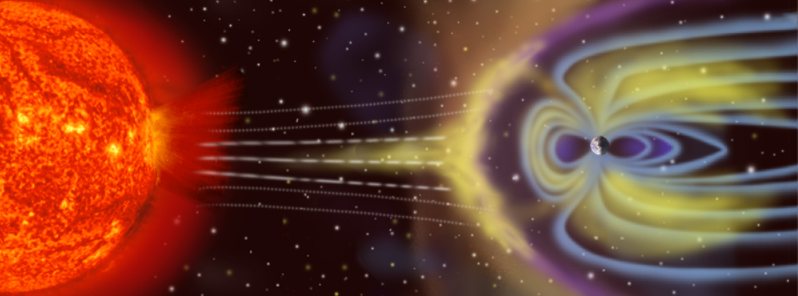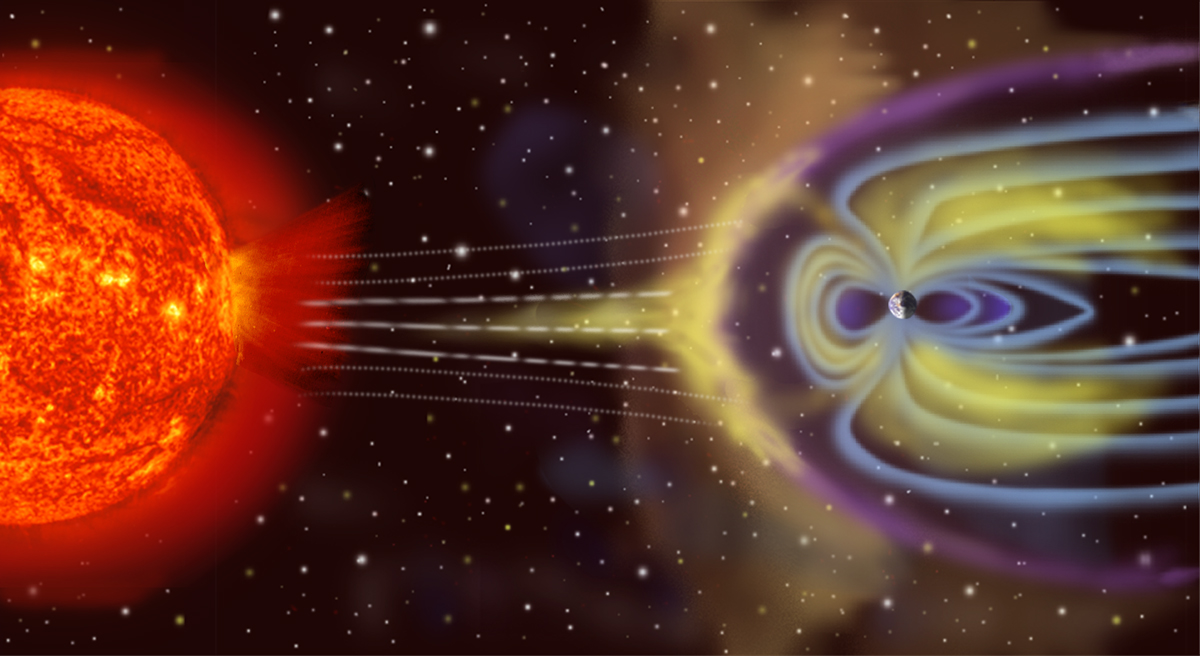Using smartphones to create distributed space weather observatory

A study by NASA astronomer Sten Odenwald found that magnetometers in smartphones can detect small disturbances of the Earth's magnetic field, allowing such devices to be used to form a distributed space weather observatory.
The 3-axis Hall-effect magnetometer chip, which became common in smartphones and other consumer devices, is used by a range of apps from compasses to metal detectors, and there is a growing interest in using these magnetometers for navigation when GPS signals are not available.
While smartphone magnetometers are being used by many, it had not been clear how such chips would be impacted by disruptions to the planet's magnetic field caused by solar storms.
Odenwald has shown that significant errors in smartphone magnetometer readings can be used by solar-storm level disruptions, saying that this sensitivity could be harnessed to create a citizen science space-weather observatory that covers wide swaths of the Earth.
For his study, Odenwald tested four smartphone models — iPhone 6s, and Samsung’s Galaxy S9, Galaxy S8, and Galaxy Note.
Each magnetometer was assessed in two ways: first, Odenwald made synthetic magnetometer data for two historical geomagnetic storm events; second, each smartphone model was subjected to real magnetic fields.
Odenwald noted that the magnetometer chips used in each of the devices are of 2012-13 vintage, so newer phone models may have performed better.
"Under certain circumstances, geomagnetic storms could be a significant source of error in compass and other positioning applications," he reported. "The changes can amount to several degrees of deviation in magnetic compass applications, and this is problematic for orienteering applications in which a stable field over many hours is needed for precise guiding."

Image: Artist's depiction of solar wind particles interacting with Earth's magnetosphere. Credit: NASA
Odenwald added that the magnetometers' sensitivity "presents a unique opportunity for scientific studies of global changes in the geomagnetic field during significant solar storm events."
Ciarán Beggan, a geophysicist from the British Geological Survey who was not involved in the study, agreed with Odenwald's findings but pointed out that ambient noise is a major barrier.
"It is potentially possible to use mobile phones to detect a geomagnetic storm – and there are projects like this already using phone magnetometers, but the real issue is that it is not easy to distinguish natural signals from manmade noise or interference in particular and that the phone magnetometers are really noisy in general, as shown [in Odenwald’s work]," he said.
"For geomagnetism, it is far better to have a few really good magnetometers with excellent signal to noise and good magnetic cleanliness that can detect subtle storms, than millions of poorer records, which are very noisy and prone to unknown interference. At the moment, I think phone magnetometers are just not sensitive enough for large storms."
Odenwald said he is now looking to develop software that will combine hundreds of smartphone measurements across the U.S. in 2023 to create a movie of the progress of a sequence of targeted geomagnetic storms.
Reference
"Can Smartphones Detect Geomagnetic Storms?" – Odenwald, S. F. – Space Weather – https://doi.org/10.1029/2020SW002669
Abstract
Several smartphone models on the Android and iOS platforms have been investigated for their ability to detect geomagnetic storms. Although this capability could have scientific application, there is a growing commercial interest in using smartphones for precision location applications not involving the GPS system. Under these circumstances, geomagnetic storms could in principle interfere with navigation accuracy. The ability of smartphones to detect geomagnetic disturbances has been tested by developing synthetic magnetometer data for two historical storm events: October 29, 2003 (G5) and July 15, 2012 (G2). These were created by combining typical sensor noise profiles with actual magnetic observatory data, and also by using a Helmholtz coil to calibrate the magnetometer responsivity near 1microTesla. A comparison of the iPhone 6S, Samsung Note 5, Galaxy S8 and S9 responses based upon their actual ambient noise measurements reveals that for the high and mid-latitude simulations, storms stronger than G2 (Kp=6) provided indications of detectability, with the strongest detections occurring for the high-latitude simulations. The low-latitude simulated observations near North American latitudes of +38o tended to register storm events at about G4 (Kp=8) or above. The degree to which geomagnetic storms interfere with precision position measurement applications can be significant at high latitudes for the occasional strong storm events during the peak of the sunspot cycle, but are probably not a significant source of error at other times for most low-latitude conditions.
Featured image credit: NASA

Commenting rules and guidelines
We value the thoughts and opinions of our readers and welcome healthy discussions on our website. In order to maintain a respectful and positive community, we ask that all commenters follow these rules.